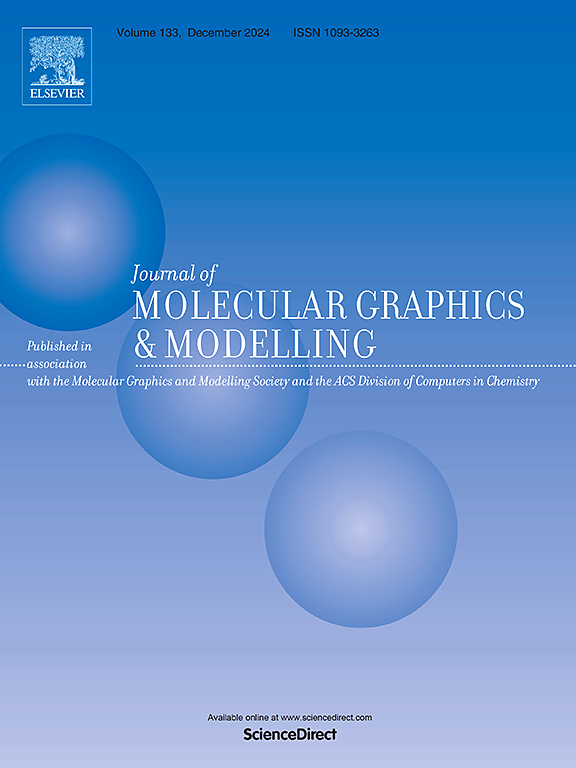Computational study of interaction of calixarene with ebola virus structural proteins and its potential therapeutic implications
IF 2.7
4区 生物学
Q2 BIOCHEMICAL RESEARCH METHODS
引用次数: 0
Abstract
Ebola virus (EBOV) is a negative-strand RNA virus that causes hemorrhagic fever and fatal illness in humans. According to WHO, the Ebola virus caused 28,646 fatal cases and 11,323 deaths in West Africa due to hemorrhagic fever and deadly disease in humans between 2013 and 2016. Between 1976 and 2022, approximately 15,409 fatalities caused by EBOV took place worldwide. Unfortunately, no effective vaccine or drugs are available to prevent this deadly disease. In the present study, State-of-the-art tools based on in-silico methods were used to elucidate the interaction pattern of calixarene (CAL) with seven EBOV structural proteins, i.e., GP1,2, nucleoprotein (NP), polymerase cofactor (VP35), (VP40), transcription activator (VP30), VP24, and RNA-dependent RNA polymerase (L). CAL is a cage-like compound with supramolecular features. The molecular docking lead analysis using AutoDock tool has been performed to find out the binding pattern of CAL with EBOV proteins. Obtained results revealed efficient inhibitory properties of calixarene (CAL) against seven Ebola virus structural proteins i.e., GP1,2, nucleoprotein (NP), polymerase cofactor (VP35), (VP40), transcription activator (VP30), VP24, and RNA-dependent RNA polymerase (L). Molecular docking analysis shows that the interaction of CAL with VP24 was highest with the total binding energy −12.47 kcal/mol and 26.90 nM inhibitions constant. Molecular Dynamics study has also quantified the efficiency of CAL against VP24. In conclusion, the present study suggests that CAL and its derivatives could be used as inhibitors to counter EBOV infection. Furthermore, in vitro and in vivo laboratory experimentation is required to establish CAL and its derivatives as a potential inhibitor against EBOV.

求助全文
约1分钟内获得全文
求助全文
来源期刊

Journal of molecular graphics & modelling
生物-计算机:跨学科应用
CiteScore
5.50
自引率
6.90%
发文量
216
审稿时长
35 days
期刊介绍:
The Journal of Molecular Graphics and Modelling is devoted to the publication of papers on the uses of computers in theoretical investigations of molecular structure, function, interaction, and design. The scope of the journal includes all aspects of molecular modeling and computational chemistry, including, for instance, the study of molecular shape and properties, molecular simulations, protein and polymer engineering, drug design, materials design, structure-activity and structure-property relationships, database mining, and compound library design.
As a primary research journal, JMGM seeks to bring new knowledge to the attention of our readers. As such, submissions to the journal need to not only report results, but must draw conclusions and explore implications of the work presented. Authors are strongly encouraged to bear this in mind when preparing manuscripts. Routine applications of standard modelling approaches, providing only very limited new scientific insight, will not meet our criteria for publication. Reproducibility of reported calculations is an important issue. Wherever possible, we urge authors to enhance their papers with Supplementary Data, for example, in QSAR studies machine-readable versions of molecular datasets or in the development of new force-field parameters versions of the topology and force field parameter files. Routine applications of existing methods that do not lead to genuinely new insight will not be considered.
 求助内容:
求助内容: 应助结果提醒方式:
应助结果提醒方式:


